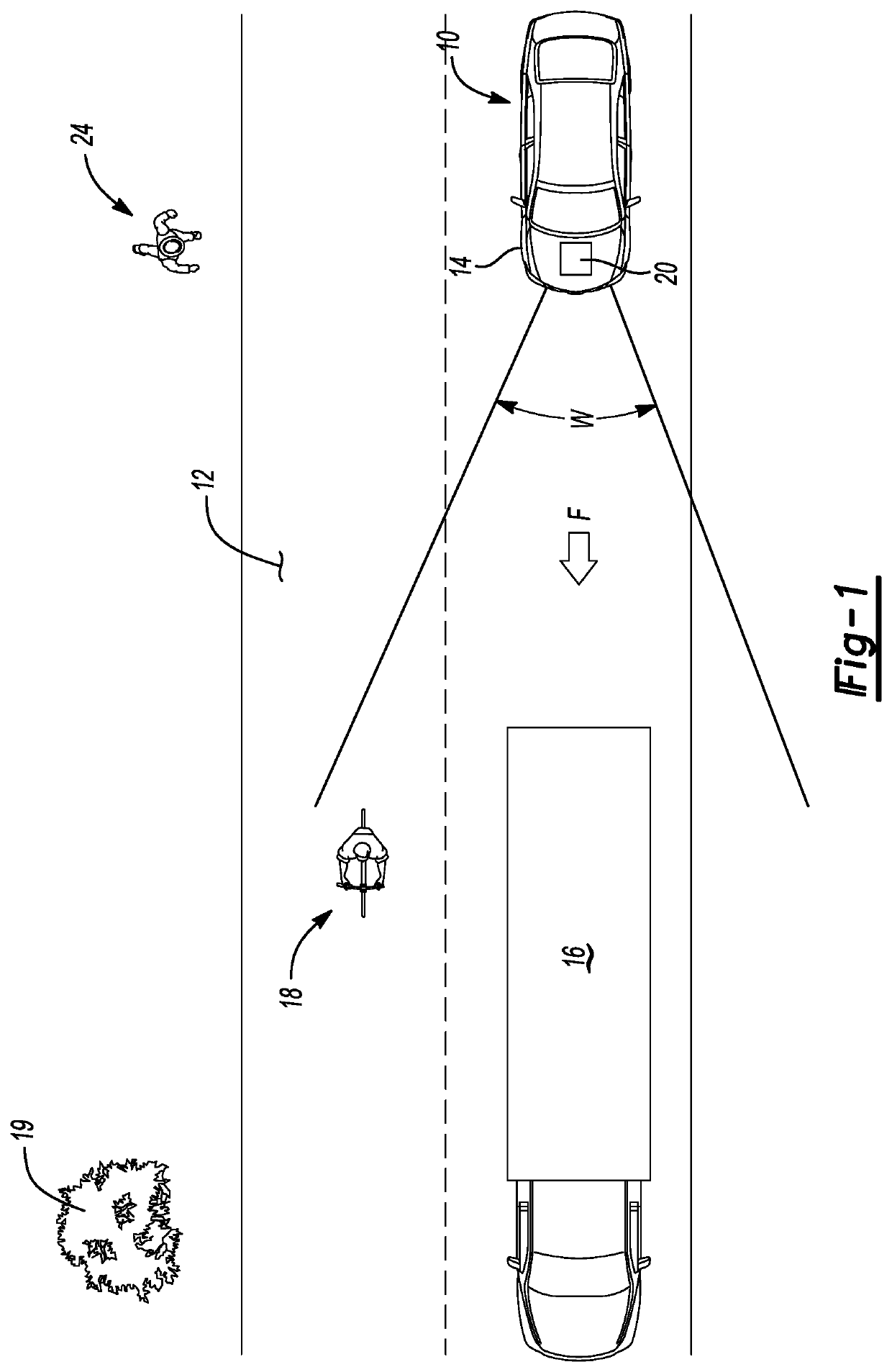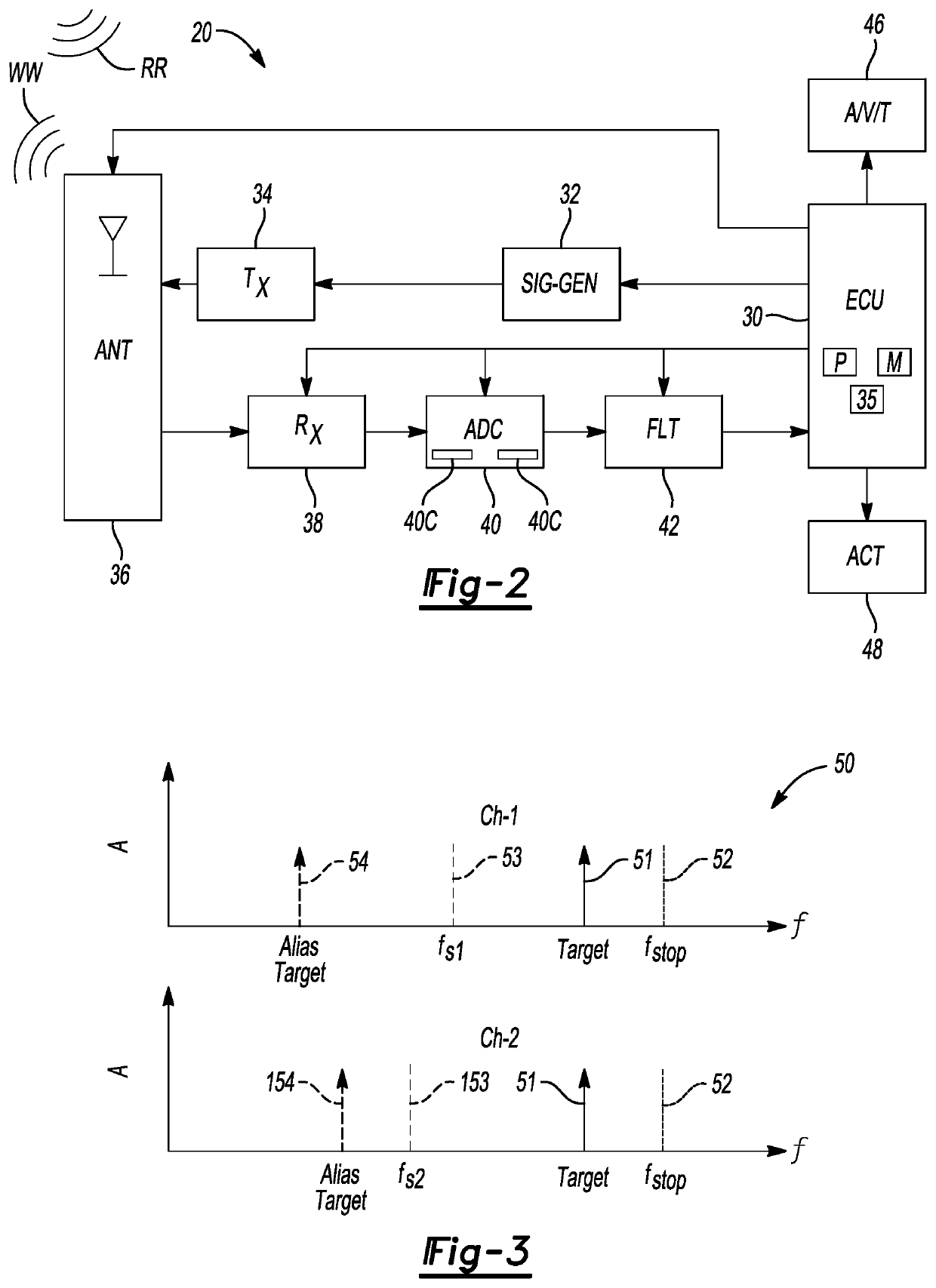Radar range ambiguity resolution using multi-rate sampling
- Summary
- Abstract
- Description
- Claims
- Application Information
AI Technical Summary
Benefits of technology
Problems solved by technology
Method used
Image
Examples
Embodiment Construction
[0027]Referring to the drawings, wherein like reference numbers refer to like components, a host system in the form of an exemplary host vehicle 10 is depicted schematically in FIG. 1. The host vehicle 10 is depicted in the illustrated embodiment as a motor vehicle. However, other vehicles may benefit from the present teachings, including but not limited to watercraft, aircraft, and rail vehicles, with the teachings being applicable as well to robots and other mobile platforms. For illustrative consistency, the host vehicle 10 will be described hereinafter in the context of a ground-based vehicle without limiting the scope of the disclosure to such an embodiment.
[0028]The host vehicle 10 includes a vehicle body 14 and a radar circuit 20, with an example embodiment of the radar circuit 20 being described in further detail below with reference to FIG. 2. The host vehicle 10, when optionally configured as a motor vehicle as shown, travels in the general direction of arrow F along a roa...
PUM
 Login to View More
Login to View More Abstract
Description
Claims
Application Information
 Login to View More
Login to View More - R&D
- Intellectual Property
- Life Sciences
- Materials
- Tech Scout
- Unparalleled Data Quality
- Higher Quality Content
- 60% Fewer Hallucinations
Browse by: Latest US Patents, China's latest patents, Technical Efficacy Thesaurus, Application Domain, Technology Topic, Popular Technical Reports.
© 2025 PatSnap. All rights reserved.Legal|Privacy policy|Modern Slavery Act Transparency Statement|Sitemap|About US| Contact US: help@patsnap.com



